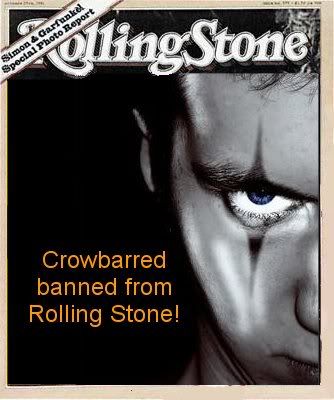Number 587 - Beatles

Number 587
The Beatles
"Revolution"
(1968)
.
.
Genre:Rock
 Was it this song that made music change heavier? Or was it Helter Skelter? At least we know it was the Beatles and of this particular album that music changed. The Led Zeppelin's, The Black Sabbath's and The Deep Purple's, did they get off on this style? Did it inspire them when they were younger, all spotty and brash? Did the music come out of the speakers and smack them across the face? Who knows, but them i guess. The White Album is the mark by which all other music is judged upon and by God so fucking be it.
Was it this song that made music change heavier? Or was it Helter Skelter? At least we know it was the Beatles and of this particular album that music changed. The Led Zeppelin's, The Black Sabbath's and The Deep Purple's, did they get off on this style? Did it inspire them when they were younger, all spotty and brash? Did the music come out of the speakers and smack them across the face? Who knows, but them i guess. The White Album is the mark by which all other music is judged upon and by God so fucking be it. Each song on the sprawling double album The Beatles is an entity to itself, as the band touches on anything and everything it can. This makes for a frustratingly scattershot record or a singularly gripping musical experience, depending on your view, but what makes the so-called White Album interesting is its mess. Never before had a rock record been so self-reflective, or so ironic; the Beach Boys send-up "Back in the U.S.S.R." and the British blooze parody "Yer Blues" are delivered straight-faced, so it's never clear if these are affectionate tributes or wicked satires. Lennon turns in two of his best ballads with "Dear Prudence" and "Julia"; scours the Abbey Road vaults for the musique concrète collage "Revolution 9"; pours on the schmaltz for Ringo's closing number, "Good Night"; celebrates the Beatles cult with "Glass Onion"; and, with "Cry Baby Cry," rivals Syd Barrett. McCartney doesn't reach quite as far, yet his songs are stunning -- the music hall romp "Honey Pie," the mock country of "Rocky Raccoon," the ska-inflected "Ob-La-Di, Ob-La-Da," and the proto-metal roar of "Helter Skelter."
Each song on the sprawling double album The Beatles is an entity to itself, as the band touches on anything and everything it can. This makes for a frustratingly scattershot record or a singularly gripping musical experience, depending on your view, but what makes the so-called White Album interesting is its mess. Never before had a rock record been so self-reflective, or so ironic; the Beach Boys send-up "Back in the U.S.S.R." and the British blooze parody "Yer Blues" are delivered straight-faced, so it's never clear if these are affectionate tributes or wicked satires. Lennon turns in two of his best ballads with "Dear Prudence" and "Julia"; scours the Abbey Road vaults for the musique concrète collage "Revolution 9"; pours on the schmaltz for Ringo's closing number, "Good Night"; celebrates the Beatles cult with "Glass Onion"; and, with "Cry Baby Cry," rivals Syd Barrett. McCartney doesn't reach quite as far, yet his songs are stunning -- the music hall romp "Honey Pie," the mock country of "Rocky Raccoon," the ska-inflected "Ob-La-Di, Ob-La-Da," and the proto-metal roar of "Helter Skelter."  Clearly, the Beatles' two main songwriting forces were no longer on the same page, but neither were George and Ringo. Harrison still had just two songs per LP, but it's clear from "While My Guitar Gently Weeps," the canned soul of "Savoy Truffle," the haunting "Long, Long, Long," and even the silly "Piggies" that he had developed into a songwriter who deserved wider exposure. And Ringo turns in a delight with his first original, the lumbering country-carnival stomp "Don't Pass Me By." None of it sounds like it was meant to share album space together, but somehow The Beatles creates its own style and sound through its mess. ~ Stephen Thomas Erlewine, All Music Guide
Clearly, the Beatles' two main songwriting forces were no longer on the same page, but neither were George and Ringo. Harrison still had just two songs per LP, but it's clear from "While My Guitar Gently Weeps," the canned soul of "Savoy Truffle," the haunting "Long, Long, Long," and even the silly "Piggies" that he had developed into a songwriter who deserved wider exposure. And Ringo turns in a delight with his first original, the lumbering country-carnival stomp "Don't Pass Me By." None of it sounds like it was meant to share album space together, but somehow The Beatles creates its own style and sound through its mess. ~ Stephen Thomas Erlewine, All Music GuideAbout The Song
 The first version of "Revolution" to be released (though the last to be recorded) was the B-side of the "Hey Jude" single, released in early September 1968.
The first version of "Revolution" to be released (though the last to be recorded) was the B-side of the "Hey Jude" single, released in early September 1968.A product of the recording sessions for The Beatles (aka The White Album), "Revolution" featured distorted guitars and an electric piano solo by session musician Nicky Hopkins. This track is said to be one of the loudest and most aggressive Beatles songs; it begins abruptly with a loud, overdriven electric guitar played by Lennon, a thundering, compressed drum beat from Ringo Starr and a monstrous scream from Lennon. (The scream was an overdub added when Lennon double tracked his vocal. McCartney performed the scream on the semi-live performance for the promotional film, because Lennon could not deliver the scream and catch his breath again in time to launch into the first verse.)
 The musical form is a simple
The musical form is a simple rock and roll chord progression, but the highly processed elements and hyperbolic approach distinguished the track from nearly anything that had come before; the sound of "Revolution" is often cited as presaging heavy metal. "Revolution" later appeared on the 1970 Hey Jude compilation album created for the U.S. market and other compilations.
The Beatles performed the song semi-live (with live vocals performed over a pre-recorded instrumental track) in a specially produced promotional film shot by director Michael Lindsay-Hogg at the same time as the Hey Jude promotional film. The film received its world premiere in Britain on David Frost's ITV television programme, 4 September 1968. As the Beatles were singing the vocals live on the film, they elected to incorporate part of the vocal arrangement from the slower Revolution 1 version of the track. McCartney and Harrison added the "shoop-doo-wop" backing vocals unique to that version behind Lennon's lead vocal - thus making the vocals on the film performance a hybrid of the two versions of the song. [source:wikipedia]
For Led Zeppelin see Number 957 & Number 577
For Black Sabbath see Number 979 & Number 826
For Deep Purple see Number 686
For The Beach Boys see Number 714 & Number 641
For more Beatles see Number 947 & Number 894
For even MORE Beatles visit Mellow Mix Vol 12 #150
For John Lennon see Number 639
For Ringo Starr see Number 901
For George Harrison see Number 806
For Ringo Starr see Number 901
For George Harrison see Number 806
For Paul McCartney see Number 583  What does Rolling Stone think about the Beatles
What does Rolling Stone think about the Beatles
 What does Rolling Stone think about the Beatles
What does Rolling Stone think about the Beatles Beyond its stylish minimalism, the essentially blank cover of The Beatles, better known as the White Album, served a symbolic purpose. The band could find no honest way to visually represent itself as a coherent unit. Each of the three main songwriters was pursuing his own vision, with the other members, however reluctantly, serving as backup musicians. Once a whole far greater than the sum of its parts, the Beatles were now a tense alliance of daunting individual talents. The Beatles became a double album in part because John Lennon, Paul McCartney and George Harrison all insisted that their favorite songs be included. "I remember having three studios operating at the same time," Harrison said of the sessions. "Paul was doing some overdubs in one, John was in another and I was recording some horns or something in a third." Ringo Starr grew so frustrated that he quit the band for a time. The others festooned his drum set in flowers to celebrate his return. What didn't suffer in this atmosphere was the music. From the plangent yearning of Lennon's "Julia" to the exuberance of McCartney's "Back in the U.S.S.R." and the prayerfulness of Harrison's "While My Guitar Gently Weeps" (featuring a solo by Eric Clapton), the White Album is an exhilarating sprawl -- some of the Beatles' most daring and delicate work. "I think it was a very good album," said McCartney. "It stood up, but it wasn't a pleasant one to make." ~ Rolling Stone
Rolling Stone Top 500 Songs ranked this song at Number (But there was so many!) and the Album ranked at Number 10
This song has a crowbarred rating of 72.4 out of 108 pts
By The Year 1955 to 2005:
1955, 1956, 1957, 1958, 1959, 1960, 1961, 1962, 1963, 1964, 1965, 1966, 1967, 1968, 1969, 1970, 1971, 1972, 1973, 1974, 1975, 1976, 1977, 1978, 1979, 1980, 1981, 1982, 1983, 1984, 1985, 1986, 1987, 1988, 1989, 1990, 1991, 1992, 1993, 1994, 1995, 1996, 1997, 1998, 1999, 2000, 2001, 2002, 2003, 2004, 2005

Labels: Beatles 587
















0 Comments:
Post a Comment
<< Home